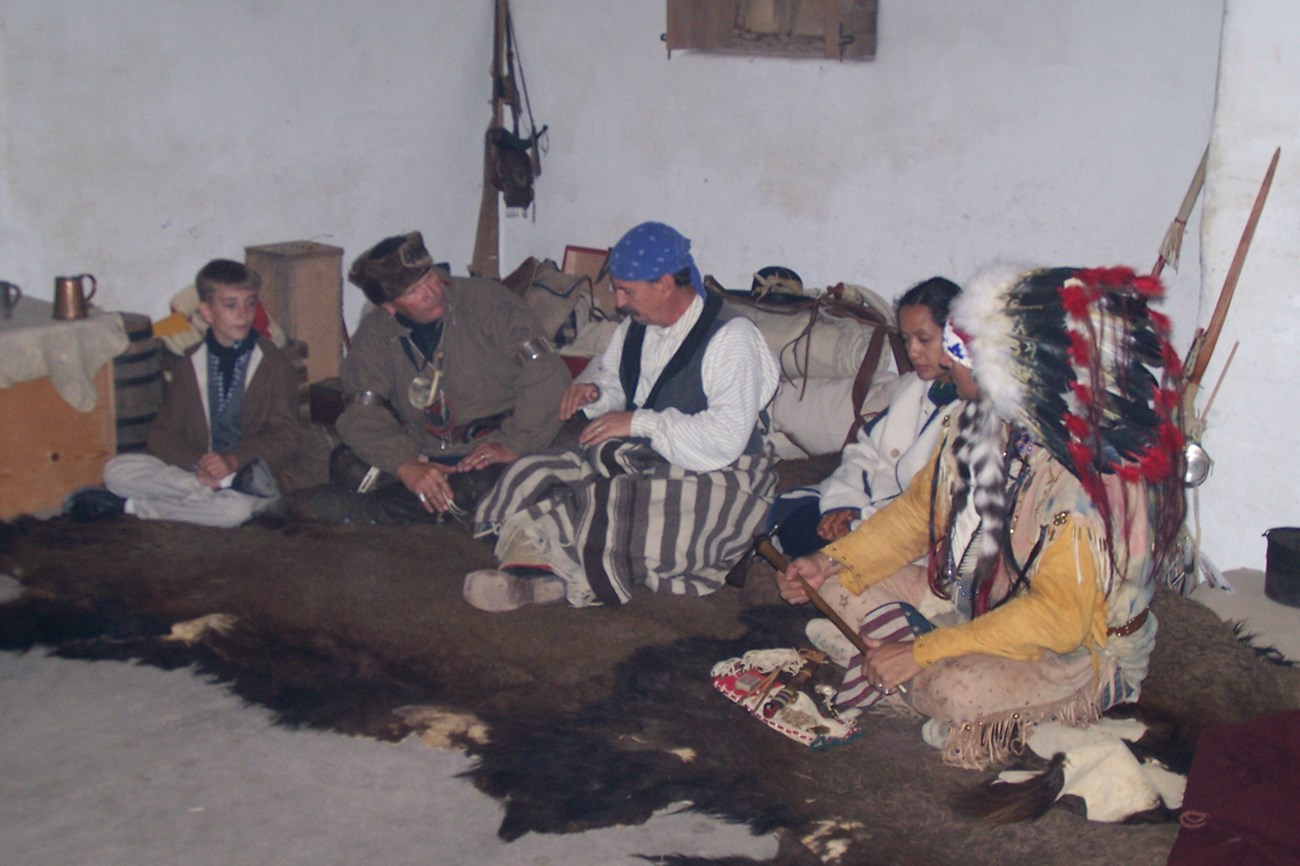Last updated: June 19, 2024
Article
Languages of the Fur Trade
Communication
Without communication the Bent, St. Vrain & Company could not have understood native customers, and vice versa. Whatever form "speaking" may have taken - spoken words, hand signs, drawings, flashing mirrors, smoke, or the exchange of gifts - communication was intended to pass thoughts and feelings, wants and desires from one group to another. Successful communication was essential to the success of trading posts in the borderlands of the nineteenth century.Interpreters
Among the people employed at Bent's Fort were interpreters William Gurrier and John Smith. These men bridged the gap between Indian and English speakers. Lieutentant Abert noted Guerrier as the Cheyenne translator at Bent's Fort in 1845 and said, "a long residence amongst them had enabled him to repeat all their graceful and expressive gestures." Smith was described by Lewis Garrard in 1846 as "...adept in the knowledge of Cheyenne tongue." Lieutentant Abert noted that Smith "...speaks the Cheyenne language better, perhaps than any other white person in the country."Years spent among the tribes had provided these white traders an opportunity to learn both spoken words and signs, though their interpretation was sometimes considered poor by Native Americans. At the urging of Congress and the Bureau of Indian Affairs, interpreters travelled with Chiefs to places like St. Louis, Philadephia, and Washington, D.C. John Smith accompanied Southern Cheyenne leaders to the White House three times, interpreting before Presidents Millard Fillmore, Abraham Lincoln, and Ulysses Grant.
The Languages
During his stay at Bent's Fort, Lieutentant James Abert wrote that he spent "several hours in the daily study of the (Cheyenne) language" and that he "found the English alphabet sufficient to represent all the sounds they utter ..." He believed the dificulty in learning Cheyenne was due to "the habit the Indians have of swallowing the last syllable of every word, so that many persons would hardly notice... and therefore omit it when attempting to speak ... and are not understood by the Indians." He observed the Cheyenne "numerical terms are beautifully arranged, each one of the digit[s] [are] expressed by the different name, and the tens ... by affixing certain terminations to the digits."From Abert's Cheyenne grammar notes at Bent's Fort, September 5, 1846:
| o ne a vo kist | beads | nast | one | ||
| te ha nay | comb | nish | two | ||
| ve o mi turn | vermillion | nah | three | ||
| mah kite | iron | knave | four | ||
| my to took | kettle | none | five | ||
| wo pe she o nun | blanket | nah-so-to | six | ||
| wo po mah | salt | ne-so-to | seven | ||
| mi tun o | gun | nah-no-to | eight | ||
| ke koi ana no | axe | so-to | nine | ||
| pini ha con | flour | mah-to-te | ten |
Cheyenne, Arapaho, Kiowa, Comanche, Ute, and Lakota were among the languages spoken in the Bent trading empire. These multiple languages made trade and communication challenging and gave rise to the use of hand signs as a Lingua Franca of the plains.
The use of signs was widespread and a combination of only 75 or 100 signs could allow a person to carry on a lengthy conversation. Fingers, hands, and arms could be clasped, shaken, stiffened, lowered, bounced, crossed, and curved. Experienced sign talkers could communicate time, numbers, the seasons, nature, and emotions. There were also signs for people - Chiefs, elders, marrios, children, men, and women.

Dave Newell
